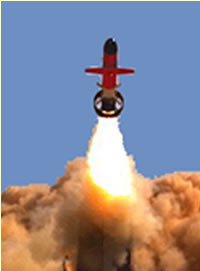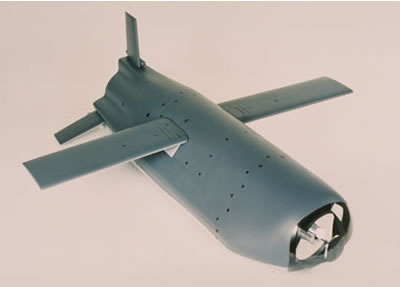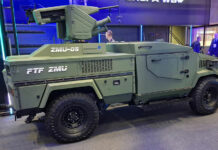The theory of aerial dominating weapons is not new, but sofar its implementation remained limited by current technology to few, specific contingencies, such as the Suppression of Enemy Air Defense (SEAD), where targets could be clearly identified and pursued with radar homing weapons. Israel pioneered this field with the Harpy loitering SEAD weapon, developed by Israel Aerospace Industries. The system has been acquired by several countries including China, Turkey, South Korea and India. IMI is demonstrating a similar multipurpose warhead for their Delilah air launched missile, yet this weapon is quite large for conventional UAVs. A follow-on to Harpy, known as Cutlass was developed under a US-Israeli cooperation. While the program has not been officially concluded, Israel is known to have offered advanced Harpy systems to several customers, including the UK, where it was proposed as “White Hawk”, for the British Loitering Munition Capability Demonstration (LMCD) under cooperation with MBDA. Another Israeli company – RAFAEL – competed for the same program, offering the BLADE (Battlefield Loitering Artillery Direct Effect), based on a modified Sparrow M UAV designed and produced by EMIT.
 A different concept, developed for the US Army pursued area domination, by a combination of several types loitering Non-Line-of-Sight (NLOS) missiles. The original concept included ‘smart’ loitering weapons, which would provide area surveillance, target acquisition and pursuit of time critical attack, while other targets would be engaged by precision attack missiles (PAM), fitted with imaging infrared seekers. But this concept proved too costly and complex. The Army eliminated the loitering missile-sensor element, deploying the NLOS launch system with the PAM, provided as a weapon repository ready to support combat units, targeted by assets available to the unit over the network.
A different concept, developed for the US Army pursued area domination, by a combination of several types loitering Non-Line-of-Sight (NLOS) missiles. The original concept included ‘smart’ loitering weapons, which would provide area surveillance, target acquisition and pursuit of time critical attack, while other targets would be engaged by precision attack missiles (PAM), fitted with imaging infrared seekers. But this concept proved too costly and complex. The Army eliminated the loitering missile-sensor element, deploying the NLOS launch system with the PAM, provided as a weapon repository ready to support combat units, targeted by assets available to the unit over the network.
Various types of air domination systems are considered by the US Air Force, enabling a military force to dominate an area from the air for extended periods, denying enemy movements and maneuvering. Current systems considered for these tasks are standard weaponized UAVs, or small expendable loitering weapons, fitted with imaging sensors, such as the powered Low Cost Autonomous Attack System (LOCAAS). Operating in swarms of ‘intelligent munitions’ weapons, such as the LOCAAS can autonomously search for and destroy, aiming for critical mobile targets over a wide combat area. Recent enhancements of the LOCAAS concept introduced ‘man in the loop’ functionality enabling re-targeting as well as the ability to abort attack by a human controller when required. Further enhancements could integrate the LOCAAS into a Surveilling Miniature Attack Cruise Missile (SMACM) ‘mothership’ carrying four LOCAAS units. The mothership will be able to support thee units with targeting, surveillance and communications support, extending the range and persistence of the basic version beyond 250 nautical miles. LOCAAS and SMACM are designed to operate in open area, pursuing stationary and mobile targets of opportunities as soon as the are exposed in the open.
Read additional parts of this article:
- Smart Weapons for UAVs
- Weaponized UAVs
- Smart Weapons for UAVs
- Evolution of UAV Employed Missiles
- Lightweight Weapons for Autonomous Platforms
- Gravity Dropped Munitions for UAVs
- Targeting at the pixel
- Loitering Autonomous Weapons
- Grouping in Constellations
- Empowered by the Swarm
- Weaponizing Unmanned Combat Helicopters


















